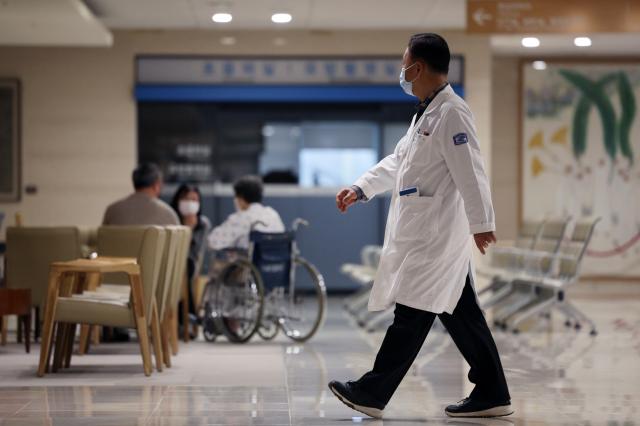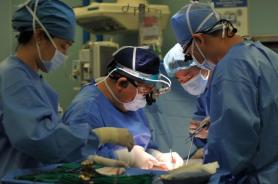
SEOUL -- To oppose the South Korean government's decision to increase the admission capacity of medical school students to around five thousand, from the current three thousand, residents at major hospitals are joining a mass resignation movement. The resident doctors' mass rally will cause chaotic situations at major hospitals, resulting in delayed or postponed surgeries and treatments.
A similar chaotic situation occurred in early 2020 when former President Moon Jae-in pushed to increase the number of trainee doctors by 400 every year to reach an annual admission capacity of four thousand students. However, the government soon faced strong retaliation from doctors who were willing to go on a nationwide strike amid an ongoing coronavirus pandemic.
Doctors opposed the government's decision, claiming that simply increasing the number of doctors will not solve regional disparities and various issues regarding low medical charges and physician shortages. The health ministry and the Korea Medical Association, an association that represents about 60 percent of South Korea's doctors, came to an agreement in September 2020 to postpone all actions, including strikes, and resume discussions when the COVID-19 pandemic subsided. However, discussions never resumed.
The joint movement by doctors was triggered by the Presidential Office's announcement made in October 2023. The presidential office made it clear that it would push to increase the number of new medical students who would begin their university training in 2025. President Yoon Suk-yeol also expressed his stern will, implying that the country's administrative bodies would stubbornly push to change South Korea's medical school admission system.
On February 20, residents at the so-called "Big 5" hospitals -- Seoul National University Hospital, Severance Hospital, Asan Medical Center, Samsung Seoul Hospital, and The Catholic University of Korea Seoul St. Mary's Hospital -- submitted their letters of resignation. Surgery schedules have decreased by 50 percent compared to normal schedules.
Due to the mass movement by resident doctors, some patients are indefinitely waiting for their surgery after their original schedule was postponed. In the Big 5 hospitals, resident doctors account for up to 40 percent of the total doctors. Hospitals are countering the mass resignation movement by dispatching medical school professors and fellow doctors to the clinic.
The government is not willing to back off from its initial stance. The health ministry has ordered residents to stand their ground and continue to treat patients while mobilizing public health clinics and military medical personnel to minimize damage caused by the manpower gap. If necessary, doctors are allowed to diagnose their patients through remote medical service, which is currently regulated to provide only limited service in South Korea.
The Korea Medical Association demanded that the government scrap its plans, including increased medical school admission, the establishment of public medical schools, and the establishment of remote medical service infrastructure.
Copyright ⓒ Aju Press All rights reserved.


![[K-Beauty] Foreign patients flock to Korea, fueling hospital-based skincare industry](https://image.ajunews.com/content/image/2025/08/04/20250804104517173889_278_163.png)

